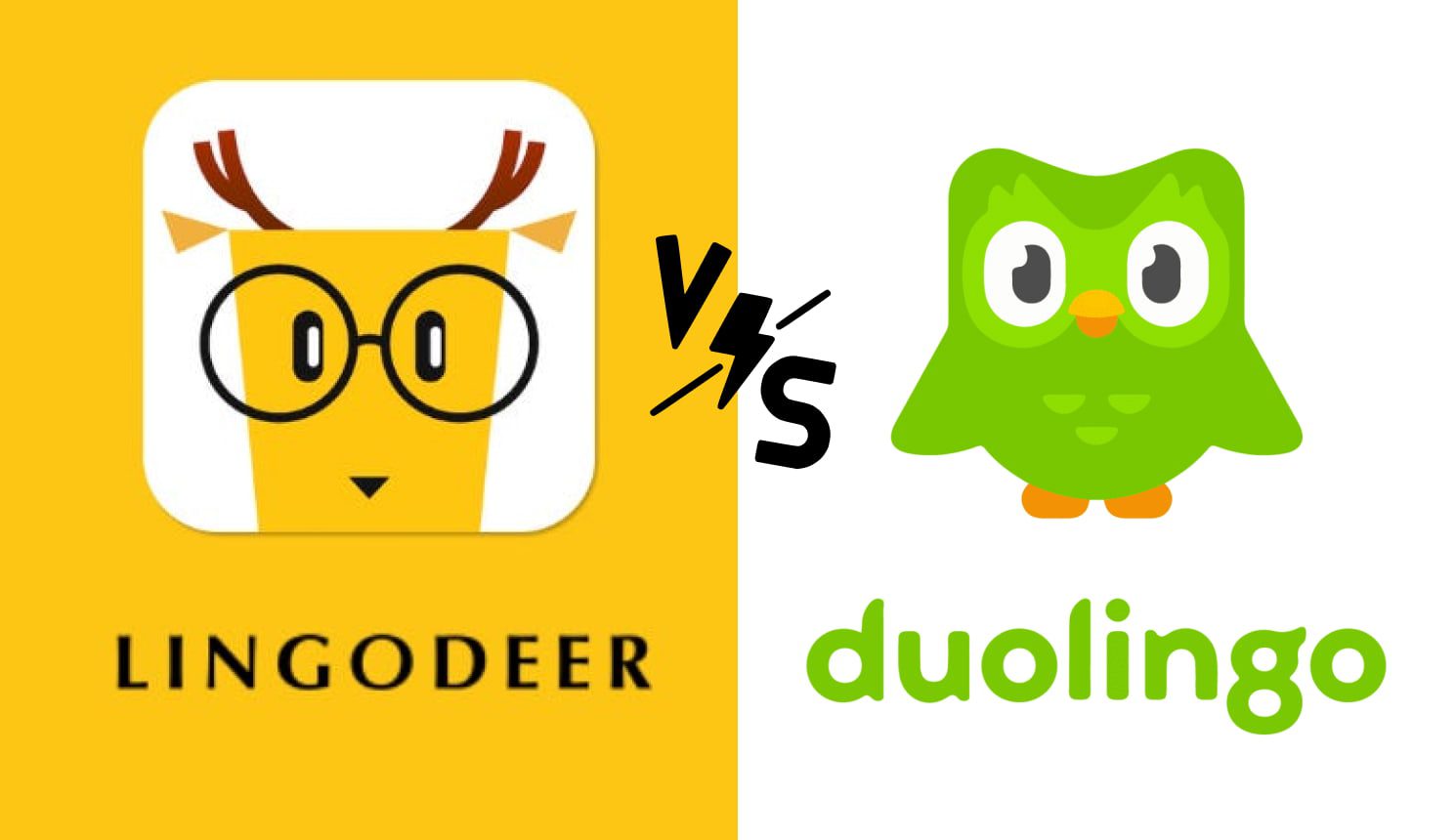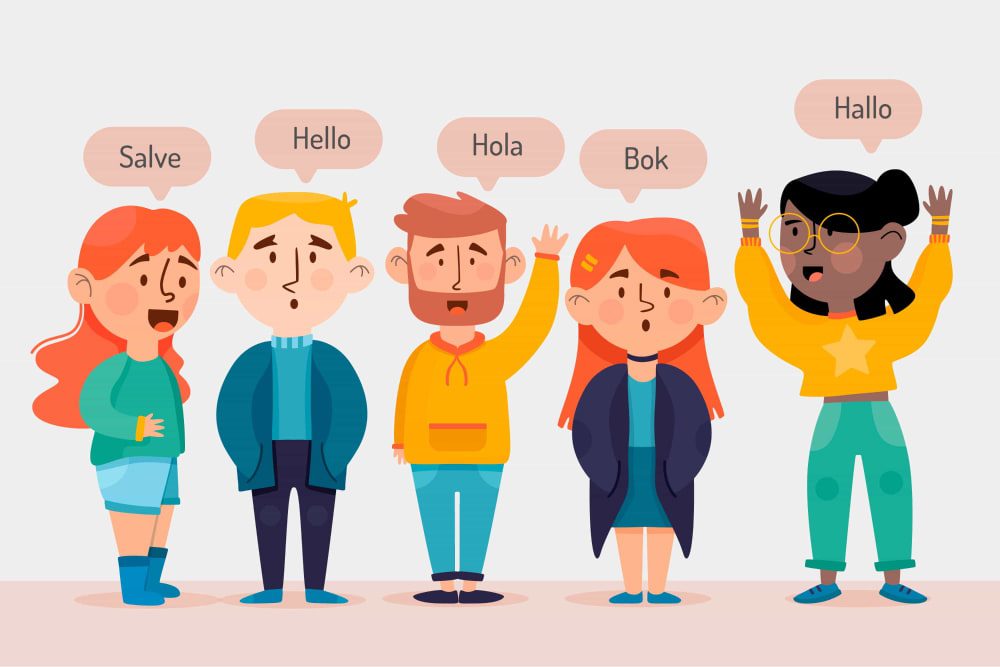Language learning applications have started to gain a lot of traction in recent years, encouraging millions all around the world to learn new languages from within their households. Among these, LingoDeer vs. Duolingo are two notable names.
While the former is known for the structured lessons one can do for Asian languages, the latter positions itself through game-like teaching capability. Some people find a structured setting more interesting, while others prefer an easy-going atmosphere with a playful method. In this regard, LingoDeer and Duolingo take quite different approaches. This means that the features make for meaningful comparisons in detail.
In this article, we will review the “LingoDeer vs Duolingo” war, and help distinguish between the purpose and understanding of both and which one is best fit for individual learning needs. We will look into their teaching methodology, language offered and other features.



What are LingoDeer and Duolingo?
LingoDeer and Duolingo are two very different language-learning platforms.
The lessons in LingoDeer stand out for being more structured and focusing on grammar, making them better for Asian language learners. Its curriculum is designed to enable the learner to understand what appears to be behind a language. That is, how a language works, offering explanations in detail concerning the grammar rules and sentence structure. This makes it a good option for those keen to dig deeper into language acquisition.
Conversely, Duolingo is popular for its fun interface where lessons are also shortened. It relies on repetition to memorize words and phrases. With its focus on casual learning, Duolingo offers languages from a spectrum of more commonly learnt ones. Such as Spanish and French to the more obscure Welsh or Hawaiian.
Duolingo also brought about good cultural impacts. It registered millions of users and made a well-known brand in no time. It learns fast, easily, and very efficiently in quite an effortless manner. For someone seeking to fit language learning into their busy lives, it is the basic choice.
Which age groups are these platforms suitable for?
Both platforms are applicable to every age bracket, but are relevant for diverse audiences. By developing more detailed lessons, LingoDeer is suitable primarily for mature students or adults who prefer to learn a language seriously. Furthermore, the emphasis on grammar and structure in LingoDeer might cause younger learners to be scared off.
On the other hand, Duolingo can be more fun to use, even for parents with kids. It uses game-like sequences of colorful designs and even gives rewards, which is a lot more fun for kids who will easily finish its short lessons. The friendly designs, as well as daily reminders, keep children engaged and encouraged to learn.
Both apps are safe for all ages, but both LingoDeer and Duolingo take very different approaches to language learning.
Track progress to help overcome your children’s educational challenges.
What are the differences between LingoDeer and Duolingo?
While both platforms exist for teaching languages, the user experience for each one is quite different. In this section, we will be comparing the two applications, mainly focusing on some of the key differences between them.
LingoDeer vs. Duolingo: What languages are available?



Both LingoDeer and Duolingo offer a number of languages, and the availability of your favorite language can dictate your choice between the two.
Duolingo offers 40 languages for English speakers and 2 for other languages. For English Speakers, it offers:
- Spanish
- French
- Japanese
- Korean
- German
- Italian
- Hindi
- Chinese
- Russia
- Arabic
- Portuguese
- English
- Turkish
- Dutch
- Vietnamese
- Greek
- Polish
- Swedish
- Latin
- Irish
- Norwegian
- Hebrew
- Ukrainian
- Indonesian
- Finnish
- Romanian
- Danish
- High Valkyrian
- Czech
- Hawaiian
- Zulu
- Welsh
- Swahili
- Hungarian
- Scottish Gaelic
- Haitian Creole
- Klingon
- Esperanto
- Navajo
- Yiddish
It also offers Catalan for Spanish speakers, as well as Cantonese for Mandarin Chinese speakers.
LingoDeer, on the other hand, offers 16 languages for English speakers:
- Arabic
- Chinese
- French
- German
- Greek
- Hindi
- Italian
- Japanese
- Korean
- Portuguese
- Russian
- Spanish
- Thai
- Turkish
- Ukrainian
- Vietnamese
LingoDeer specializes in Asian languages, which means it has a notably smaller library of languages. There are long lessons in Japanese, Chinese, Korean, and Vietnamese. But there are fewer European languages like French or Spanish.
On the other hand, Duolingo has a larger variety of languages. It supports European languages as well as Asian ones and even provides varieties in lesser-known languages, like Irish, Welsh and even the fictional Klingon. If language variety is the goal, then Duolingo is the better choice.
How about the teaching method?
This is where LingoDeer vs. Duolingo diverges the most.
LingoDeer is far more aligned with traditional teaching methods. A structured lesson approach focusing on grammar, sentence construction, and vocabulary. It gives detailed explanations of grammar rules, helping their students internalize a more detailed level of understanding. It has grammar lessons that explain why phrases are structured in different ways, further supporting its focus on deep learning.
LingoDeer’s teaching methodology is good with a solid foundation, especially for those languages that have a very complicated grammar system like Japanese or Korean.
Duolingo, on the other hand, uses gamification. Their lessons are placed in small chunks, and the users are challenged to master all those lessons in short spurts of time. Duolingo applies repetition in learning but pays less attention to grammar. This makes learning more enjoyable, but of course, it doesn’t help the students who want to see the subtlety of language.
Duolingo uses intuitive translation-based learning, where the users translate sentences from a first language into a target language. This relies on vocabulary and phrase principles but doesn’t provide any understanding of the logic of grammatical rules.
How much do LingoDeer and Duolingo cost?



Duolingo Pricing:
- Monthly: $12.99 USD
- 12 Months: $83.99 USD ($6.99 USD per month)
- Family Plan (Yearly): $119.99 USD (9.99 USD per month)
The Family Plan offers Duolingo Super for 2-6 members for a slightly larger price. While the others only offer it to individuals.
LingoDeer Pricing:
- Monthly: $14.99 USD
- 4-month plan: $39.99 USD
- 12-month plan: $79.99 USD
- Lifetime (one-time payment): $159.99 USD
Can you use these platforms without subscription?
Yes, many features are open for free of cost.
LingoDeer locks many lessons and advanced features for free users. Its free version is useful for getting a feel for the language, but for progress beyond basic levels, it is very well worth forking out for the paid version.
Duolingo gives the user access to full courses in the free version, but advertising is problematic. Some features like “mistake reviews” only show up under the paid models.
To fully exploit either of the two, a paid subscription is advisable.
How do LingoDeer and Duolingo compare for language learning needs?
Both are useful for varying purposes. LingoDeer is suitable for a learner who intends to dive into the deep depths of grammar and understand how the language really works. While Duolingo is great for those who want to learn a new language superficially, mainly by repeating phrases and doing funny exercises. This means that the better one is all up to personal requirements.
Which one is better for beginners?
Duolingo is much more friendlier to a complete newbie. This is because it is a game-like platform. It is colorful and has short lessons that are not as intimidating for new learners.
LingoDeer is also beginner-friendly. However, because it focuses more on grammar and sentence structure, a beginner in language learning would find it much more difficult.
Which platform is better for people who want to fully master a language?
However, those who intend to master their desired language completely will prefer LingoDeer over Duolingo. LingoDeer’s lessons are deeper, involving grammar with a solid foundation. The depth required to truly become fluent in a language can be achieved by the lessons available on LingoDeer.
Duolingo does very well in building vocabulary and recalling simple phrases. But it does delve deep into the advanced features of its languages, making you only able to achieve a basic level of understanding of the language.
Is LingoDeer better than Duolingo for Asian languages?
Yes, LingoDeer is much better for Asian languages, focusing mainly on Japanese, Korean and Chinese. It gives the best possible explanations regarding the rules of languages and pays more attention to grammar and sentence structure. This proves to be crucial in studying these types of languages.
Duolingo also offers courses for Asian languages; however, it isn’t as effective for learners interested in learning the real aspects of grammar.
LingoDeer vs. Duolingo: Which app is right for you?
| Feature | LingoDeer | Duolingo |
|---|---|---|
| Languages Available | Focus on Asian languages + some European | Wide variety, including niche and fictional |
| Teaching Method | Grammar-focused, Detailed explanations | Gamified, repetition-based |
| Cost | Free with paid premium version | Free with paid Duolingo Plus option |
| Best for | Serious learners, especially of Asian langs | Casual learners, beginners |
| User Engagement | Structured learning paths | Fun, game-like experience |
In conclusion, it mainly depends on what you are looking for on the platform. If you are looking for detailed explanations and deep learning of a language, especially an Asian one, the LingoDeer is the way to go. However, if you are looking for a fun, easy-to-use app with numerous language choices, then Duolingo is the right choice.
Can you become fluent using LingoDeer or Duolingo?
Both are excellent tools, but fluency is generally something that comes from more than an app. LingoDeer provides a firmer grammatical foundation, which, when used with speaking practice and immersion, leads to fluency. Duolingo is adequate for informal words and a basic understanding. It will be insufficient for learners aiming to become completely fluent.
What about the technical support and customer service?
In terms of customer support, LingoDeer is very responsive across different platforms like email or social media. While Duolingo, being a larger platform, offers community forums and a knowledge base where users can get an idea of answers to common questions. The company will be a bit slower in terms of direct support.
Overall though, both services offer pretty decent customer support, but LingoDeer would be a kind of more intimate experience as it is a relatively smaller organization.
Alternatives for language learning
While both LingoDeer and Duolingo are phenomenal tools, there are more options available. Babbel is the most popular one, and it is used specifically for learning European languages with detailed explanations in lessons that go way beyond Duolingo. WaniKani specializes in learning Japanese Kanji, and it really makes an ideal supplement with LingoDeer. Pimsleur is designed for audio-based learning and is super useful for a learner who needs to bring their speaking skills up to par or their listening skills up a level.
Bonus: How to spot your kids’ learning struggles?



During the process of learning a language, a child faces specific problem areas. For some people, it can be difficult to understand grammar rules or to remember vocabulary. For this, you should check on the child often and help them in areas where it is needed. You can also use parental control applications like FlashGet Kids to track the progress of your child’s learning process. Such apps can help a parent understand where their child is excelling and where they are struggling. With encouragement and guidance, you can make sure to provide children with a proper learning path.
Final words
Everything ultimately boils down to the learner’s needs. LingoDeer vs Duolingo: what decides the better application is ultimately the requirement the learner needs to fulfill.
People who only need a basic understanding of a language can choose Duolingo. It suits learners who like a laid-back approach and learning in a fun way. Others who want to develop advanced abilities and control over a language would prefer LingoDeer, especially in the case of Asian languages. It provides better lessons on grammar and structure, catering to a deeper understanding.
Both have their strengths and depend on the ability of the learner to be consistent. This is especially important in the case of children who have shorter attention spans. To keep track of their real-time progress, you can use the monitoring feature of FlashGet Kids to gain the ability to provide real-time support in difficult areas.
FAQs
Why isn’t LingoDeer as popular as other language apps?
LingoDeer focuses on lessons providing details about grammar and sentence structure, which makes it less appealing for casual learners.
Are these lessons for advanced learners?
Yes, LingoDeer provides lessons for more advanced learners who want to develop a deep understanding of their language.
Which app is faster for mastering German?
Duolingo provides a better course for mastering German. It provides better resources and a structured path, making it a faster option.

